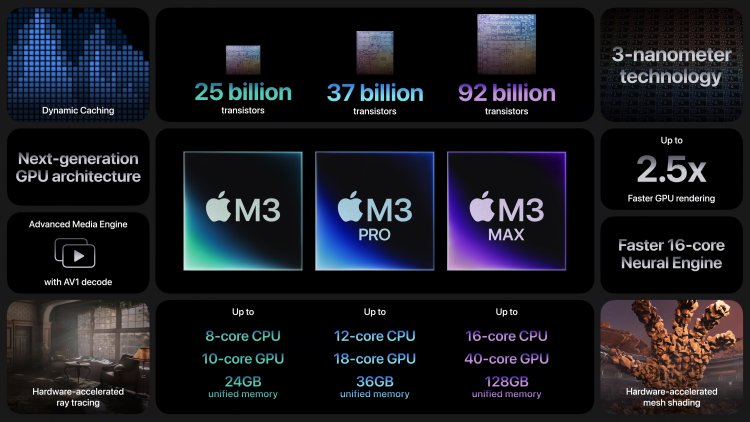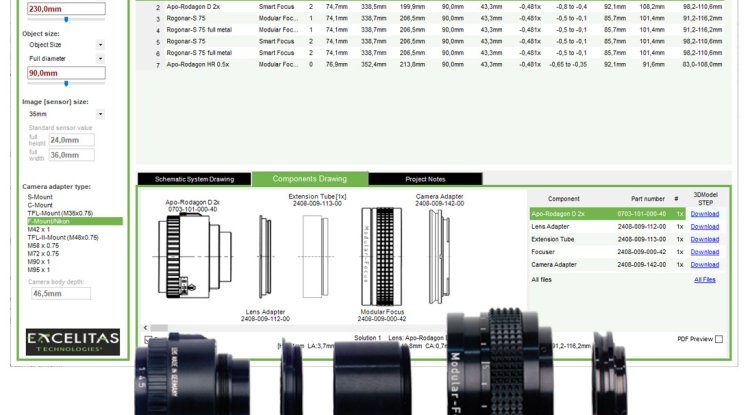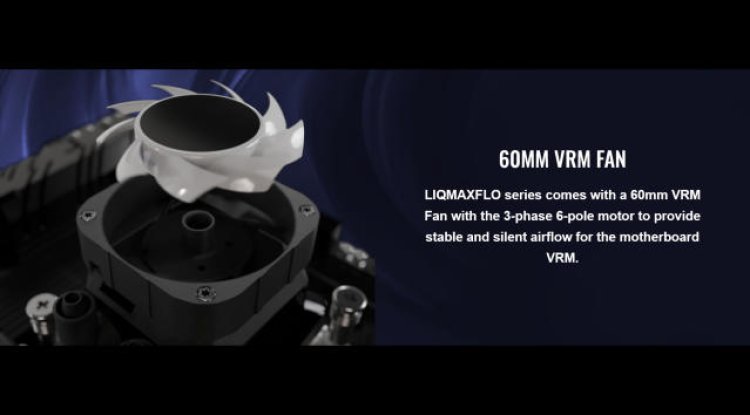Apple's New Era with M3 SoC Family: M3, M3 Pro, and M3 Max
In a significant move for the tech industry, Apple has announced its latest generation of M-series processors – the M3, M3 Pro, and M3 Max. These processors, built on TSMC’s advanced N3B process, aim to set new benchmarks in CPU and GPU performance, accompanied by a record number of transistors in a single laptop SoC.

Launch and Integration into Apple Products
M3 Series and MacBook Pros
The M3 series announcement coincides with the release of new MacBook Pros and a refreshed 24-inch iMac. Despite no external design changes to these devices, the focus is on the upgraded internal capabilities brought by the M3 processors.
Unified Approach to Processor Launch
Breaking from its usual staggered launch strategy, Apple has unveiled the entire lineup of the M3 series at once. This ambitious move marks a departure from the incremental release pattern seen in previous generations, like the M2.
Technical Specifications of the M3 Series
Breakdown of the M3 Family
Each SoC in the M3 family is designed to cater to different performance needs. The M3 Max leads with a 12-core CPU for performance, a 40-core GPU, and a 16-core Neural Engine. The M3 Pro follows with a 6-core CPU and an 18-core GPU, while the standard M3 houses a 4-core CPU and a 10-core GPU.
Memory and I/O Capabilities
All three chips share a common architecture, scaling up in cores, I/O, and memory channels. The M3 Max boasts a staggering 92 billion transistors and supports up to 128GB of memory. In contrast, the M3 starts with 25 billion transistors and 24GB of memory capacity.
Manufacturing Process
The M3 series utilizes TSMC's N3B manufacturing process, a cutting-edge 3nm design offering significant improvements in transistor density and power efficiency.
Innovations in CPU and GPU Performance
M3 CPU Architecture
The M3 family touts a roughly 15% improvement in high-performance CPU core performance over the M2 and a 30% improvement compared to the M1. However, Apple remains ambiguous about the specific CPU and GPU architectures used within the M3 family.
GPU Advancements
The M3 family introduces significant updates in GPU architecture, including mesh shading and ray tracing. These features align the M3 GPU with current high-end discrete GPU designs, offering DirectX 12 Ultimate-class capabilities within an integrated laptop SoC.
Impact on Apple's Product Lineup
Strategy Shift in Chip Deployment
Apple's decision to start with high-end devices like the MacBook Pro and iMac, as opposed to entry-level products, indicates a shift in strategy. This move could be attributed to the initial yield and volume bottlenecks associated with the N3B node.
Transistor Count and Die Sizes
The M3 Max, with its 92 billion transistors, represents a significant leap in transistor count. While Apple has not disclosed the die sizes, these figures are expected to be substantial, reflecting the chip's complexity.
Also Check Intel has an ace up its sleeve?
Memory and Bandwidth Considerations
LPDDR5 Memory Utilization
Despite the availability of faster LPDDR5X memory, Apple has chosen to stick with LPDDR5-6400 memory across the M3 family. This decision could be influenced by technical limitations or an intentional strategy to balance performance and energy efficiency.
M3 GPU Architecture: Mesh Shading and Ray Tracing
Introduction of New Rendering Techniques
The M3 GPU architecture brings two major features: mesh shading and ray tracing. Mesh shading enhances the efficiency of the rendering pipeline, allowing for more detailed geometries at practical frame rates. Ray tracing, on the other hand, offers more physically accurate rendering.
Aligning with Discrete GPU Designs
With these features, the M3 GPU architecture aligns with the latest discrete GPUs, offering capabilities equivalent to high-end graphics cards. This integration positions Apple's integrated GPUs to compete directly with established GPU manufacturers.
The Future of Apple's SoC Development
Anticipated Impact on Macs and iPads
The M3 SoC family is expected to significantly improve performance in high-end Macs and potentially in future iPad models. This development could redefine user expectations for performance in Apple's computing devices.
Potential for Further Innovation
As Apple continues to innovate in SoC design, the M3 family sets a new precedent for performance and efficiency. Future iterations and applications of this technology could further solidify Apple's position as a leader in processor design.
Conclusion: Apple's M3 SoCs Reshaping the Tech Landscape
Apple's Bold Move with the M3 Series
The launch of the M3, M3 Pro, and M3 Max SoCs represents a bold move by Apple, aiming to redefine the standards of laptop and desktop processing power. By integrating these advanced chips into their product lineup, Apple is poised to offer unparalleled performance and efficiency to its users.
The Broader Implications for the Industry
Apple's latest SoC developments are likely to influence the broader tech industry, pushing competitors to innovate and adapt. The M3 series sets new benchmarks in processor design, potentially reshaping user expectations and the future direction of computing technology.





































